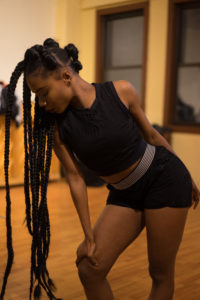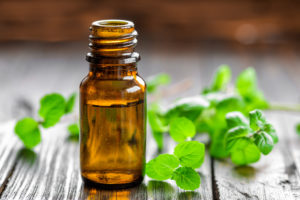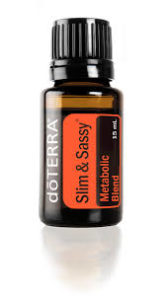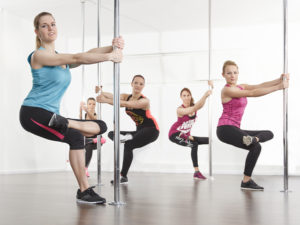July 31, 2017
Sleek Physique Apparel


July 31, 2017
 Art Therapy Pick: Collaging
Art Therapy Pick: Collaging
Art therapy is a form of expressive therapy that focuses on using the creative process of making art to improve your overall well-being. Anyone can participate in art therapy, you don’t have to be the next Picasso, just let your creativity flow and see how free it can make you feel.
This month’s art therapy pick is collaging. Although many think of collaging as something children often partake in, it is actually something that is done by people of all ages for many different reasons. It is easy, and it does not require any artistic skill whatsoever. All you need is some paper, scissors, glue, and all of those old magazines that you couldn’t bring yourself to throw away.
Art is a form of expression, and it’s meant to evoke all sorts of emotions that challenge the way we think and feel on a day to day basis. For example, collaging can be as simple as seeing a picture of a woman screaming in a magazine or painting, then thinking to yourself, “I can relate to that.” If the stress of life is bringing you down on a particular day, or if an image just speaks to you, then add it to your piece.
There are a number of mental benefits that come with collaging. Similar to many forms of artistic expression, collaging provides a “symbolic release” of emotions. We may not know that we feel certain things until we have created something that reflects them. The emotions that your own creations evoke may end up surprising you!
Collaging has become very popular among therapists with clients of all ages who have trouble expressing their feelings with words. Unlike painting or drawing, you do not need experience to make something beautiful or meaningful. This is great because it creates a judgment-free environment where individuals of any age can participate in the therapeutic activity. Collage alone or with friends, and create that piece that speaks louder than words.
If you are interested in starting your crafting journey, please visit cindysplace.ctmh.com, a Close To My Heart representative who will be more than happy to help you get started.
July 31, 2017
 Essential Oil Spotlight: Peppermint Oil
Essential Oil Spotlight: Peppermint Oil
This month’s essential oil spotlight is on peppermint oil. Not only does this oil smell amazing, but it also comes with great health benefits for all sorts of health issues, including migraines, sunburn, acne, and stomach pains!
When you have a stomach ache, one of the first things your search engine will tell you is to drink peppermint tea. Peppermint itself is known for its ability to reduce muscle aches and spasms due to the cooling nature found in menthol, which peppermint naturally produces. Did you know that you can get the same effect with peppermint oil? By adding a few drops of the oil into your drink of choice, you can create that same effect, and it will produce similar results! The carminative properties found in peppermint oil have been known to aid with digestive issues because of it’s ability to help release gas.
You can find peppermint oil at your local Walgreens, or body shop. It can sell anywhere from five dollars to twenty dollars, depending on the size and quality you’re looking for. Here are just a few of the stomach problems that peppermint oil can help with:
-Nausea
-Indigestion
-Hunger pains
-Motion Sickness
To alleviate any general feelings of nausea, rubbing just a little bit of the oil onto your stomach, wrists, and temples can immediately show results. Be careful however; peppermint oil is highly concentrated, even more so than other oils, so all you need is about 1-2 drops.
Trying to lose weight, but having trouble with controlling your appetite? Open up your bottle of peppermint oil, and just take a wiff or two. The smell of peppermint has been reported to trigger a feeling of fullness, so the oil can help you feel full quicker. It smells like heaven too, so you’ll feel great while knowing that you’re helping your body too.
July 31, 2017
Last issue on Mind, Body, Live, we talked about the different damages that can be done to hair. Although these are very important to know, another important aspect of healthy hair is knowing your hair porosity. Admittedly, even I hadn’t heard of what this term was or why it was even important. However, after some research on my own hair, I quickly realized that knowing your hair porosity is a must! Knowing it will ultimately give you the best care for your curls.
What is hair porosity?
Hair porosity is your hair’s ability to absorb and retain moisture. Normally, this can be broken down into three categories: low, normal, and high. Depending on the condition of your hair, your cuticle layers could be very open allowing a lot of moisture to enter (high porosity) or it could be very tight, preventing moisture from entering (low porosity).
When your hair has very high porous levels, your hair tends to feel extremely dry because moisture escapes too quickly. You know this is true when you apply a hydrating product into your hair and very quickly you feel little to no difference. WIth high porosity hair, the cuticles of the hair shaft are open, resulting in moisture being unable to stay in after the hair absorbs what is needed.
When your hair has very low porous levels, your hair can sometimes feel very heavy, like products sit on top of it and don’t move. This is because the cuticles are very tight and allow little to no moisture to enter. For this reason, when applying products to this type of hair, they can have almost no effect on it.
How to find out your porosity level?
 Here’s a little test you can do to see if your hair is high in porosity, low in porosity, or just right.
Here’s a little test you can do to see if your hair is high in porosity, low in porosity, or just right.
“What do I do now?”
If you just tested out your hair and determined what category you are under, you may be wondering, “now what?” Here’s where I’ll give you a few tips of what products are good for each hair type.
High Porosity Hair: If your hair sank, then high porosity is what you have. Try adding products that are rich in protein, perhaps an avocado deep conditioner. Aloe and wheat protein are also good to fill in the open gaps of your hair cuticle. Leave-in conditioners and sealers will become your best friend, as well as heavier products such as butters.
Low Porosity Hair: If your hair was floating, then you have low porosity. Since low porosity hair is very tight, this type of hair is prone to build up. Try sticking to protein-free daily conditioners with humectants such as glycerin or honey, something light. You can even use moderate heat as well. Low porosity hair requires moisturizers rich in emollients such as shea butter, jojoba oil, coconut oil and mineral oil, so be sure to stock up on those!
Stay tuned next time on Au Naturale for more tips and tricks!
June 30, 2017
Every woman knows that hair can be a challenge. This is especially so for women who have curlier hair types. Myself and many other natural-haired gals know that curlier has requires more attentive care. Because our hair types are more fragile, damage becomes inevitable. Although natural hair, can be said to be more malleable, that also makes it more susceptible to excess damage caused by that manipulation. Yes, protective styles such as braids, twists, etc can promote hair growth, but it can also be one of the culprits of hair damage. To be clear, by natural hair, I’m talkin’ 3c to 4c hair. I’d love to get into the discussion of hair types and the importance of knowing your hair type, but that’s another article for the next edition perhaps. Right now, I’m going to focus on 4 categories of damage that could be happening to you. It is important to understand what is going on with your hair exactly before attempting to fix it.
Physical / Heat Damage
Physical damage is the most common type of damage done to natural hair, thus having the most drastic effects. Why is this the case? Because we are always constantly trying to tame our mane. Physical damages are the hairstyles we do, the combing, detangling, etc that compromises the health and strength of our hair. Trust me, I know far too well that ponytails, puffs, and buns are a girl’s best friend because they are quick and easy to do. Still, these styles can cause a strain on our edges and hair, causing receding hairline. Detangling and styling can also have an affect if not done carefully. Excessive combing through the hair can lead split ends and more breakage. For these reasons, many people turn to braids as a protective style and solution to the problems listed above. Don’t be fooled. Braids can often be too tight or too heavy and when left in for too long without proper care, that can be more damaging than if your hair was out. Some protective style, huh?
You may be more familiar with heat damage and that is because it is probably the most talked about the type of damage there is. Heat damage is a type of physical damage that is often dome to natural hair. Excess hair straightening, blow-drying, and curling can all cause this. How does heat damage happen? Hair is comprised of three layers: the medulla, the cortex, and the cuticle. When high temperatures of heat are used on hair without protection, heat damage to the cuticle can occur, which breaks down the protein bonds. Signs of heat damage include: a loosened curl pattern, straight pieces of hair, reduced elasticity, dryness, frizz, and ultimately splitting and breakage.
Chemical Damage
Chemical damage is also another common criminal to our hair. This is also another reason why women often tend to transition to their natural hair. If you don’t know what chemical damage is, it can be experienced from repeated use of relaxers or constant straightening of your hair. This is not the only ways you can get chemical damage though. Sometimes women with natural hair use chemical treatments such as coloring, bleaching, and highlighting. Chemical damage can also occur from the products you use. So, be careful not to use anything with with ingredients that can dry out your hair, cause more tangles, etc.
Environmental Damage
Environmental damage is the third type of damage to be aware of. You always must be mindful of the environment where you live and/or around you. For example, you must be aware of places that have hard water. Hard water is water with a high mineral content, so this means that when washing your hair, the minerals may start to affect the moisture in your hair over time. Strong winds can make your hair frizzier, resulting in breakage. Always be mindful of heat, wind, strong sun, cold air, humidity, etc.
Nutritional Damage
The last aspect that I’ll touch on, but certainly not least, it nutritional damage. Although hair is technically dead, your hair follicles are not. You need the proper amount of nutrients for proper blood flow. If not, your body will re-prioritize the nutrients that it does receive. Those nutrients will then go to the most important places such as your vital organs, and the least important places, like hair, are last. Stress also affects your body and hair. Similarly, any health conditions can also affect hair growth.
Product Pick: Raw Shea Butter Deep Treatment Masque

Since I was already on the topic of hair, I naturally figured I would write a review on a particular hair product! This issue’s product pick is the Raw Shea Butter Deep Treatment Masque from Shea Moisture.
Being a natural hair gal myself, I love Shea Moisture. Still, that doesn’t mean that every product works for me. More often than not, I’m left struggling to find what actually works well with my hair. Recently I have been experienced some hair damage and turned to this product for help. I’ve been incorporating it into my wash day routine for several months now and so far so good.
The main ingredient is raw shea butter, of course. This deep treatment masque is also rich with plenty of oils, like argan oil, avocado oil, and other essential oils to keep hair moisturized. Shea Moisture has also incorporated sea kelp which works well for retaining moisture as well.
This masque is specifically for dry and damaged hair. So, I encourage you to make sure that your hair can handle as much moisture as this masque can dish out. I say this because, the one downside I’ve found with this product is that it tends to dry-out some hair textures.
Overall, I rate this product: 4 stars.
June 30, 2017
 doTerra Slim & Sassy is a metabolic oil blend that helps manage hunger cravings and promotes a healthy metabolism. It’s ingredients consist of all natural grapefruit, lemon, peppermint, ginger, and cinnamon essential oils. You can add a few drops to your water and drink between your healthy meals throughout the day to experience the complete benefits of all it’s ingredients.
doTerra Slim & Sassy is a metabolic oil blend that helps manage hunger cravings and promotes a healthy metabolism. It’s ingredients consist of all natural grapefruit, lemon, peppermint, ginger, and cinnamon essential oils. You can add a few drops to your water and drink between your healthy meals throughout the day to experience the complete benefits of all it’s ingredients.
Grapefruits oil benefits:
Lemon oil benefits:
Peppermint oil benefits:
Ginger oil benefits:
Cinnamon oil benefits:
Visit https://www.mydoterra.com/spwellnesscorner/#/ now to add Slim & Sassy to your shopping cart!
June 30, 2017

For this issues Food Find, we’re heading to Seoul, South Korea! Kimchi is Korea’s best-kept secret! Fermented cabbage, scallions, and radishes are seasoned to perfection with garlic, ginger, onions, and chili powder spices; making kimchi a Korean superfood. The taste can range from mild to spicy depending on your preference. The best kimchi is usually described as having a spicy flavor and a crunchy texture. Kimchi, filled with A and C vitamins, are high in nutrition and contains very low calories too! What’s more, since fermented foods are mighty detoxifiers and contain high levels of lactobacilli (beneficial bacteria), this makes kimchi ideal for aiding in the digestion process, which will speed up your metabolism leading to weight loss. Another great benefit of the fermentation process is that it creates probiotics that help the body fight off various infections and boost your immune system. So the next time you’re at your natural foods store or Asian market, pick up some kimchi. I promise you, you won’t be disappointed!
June 30, 2017
Ingredients
93% Lean Ground Turkey
1 Tbsp Olive Oil
1 Tbsp Minced Garlic
3/4 c. Yellow Onion
1/2 c. Chicken Broth, low sodium
1/2 c. Tomato Sauce
1 Tbsp Chili powder
1/2 tsp Paprika
1 tsp Cumin
Mexican Cheese
Salt and freshly ground black pepper
Iceberg or Romaine Lettuce for serving
Directions
Heat olive oil in a non-stick skillet over medium-high heat.
Add onion and saute 2 minutes.
Add turkey and garlic, season with salt and pepper, and cook, tossing and breaking up turkey occasionally, until cooked through, about 5 minutes.
Add chili powder, cumin, paprika, tomato sauce and chicken broth.
Reduce to a simmer and cook about 5 minutes until sauce has reduced.
Serve mixture over lettuce leaves with desired toppings.
June 30, 2017
 There’s a hot new fitness trend polling up the charts. It’s called pole fitness, and yes, it’s exactly what you’re thinking. One of the world’s oldest professions is now becoming a new craze. More and more people are opting out from their “traditional” gym routines and adding a pole fitness one. Pole fitness is an exciting and fun way to exercise that barely feels like actual exercise. It’s a fantastic full body workout incorporating resistance and cardio training. These movements directly target your abs, arms, legs, and shoulders, not to mention, it’s possible to burn over 500 calories in just one class! You’ll rapidly notice your upper body developing strength and your core becoming more toned. With such a fun and beneficial workout, what’s not to try?
There’s a hot new fitness trend polling up the charts. It’s called pole fitness, and yes, it’s exactly what you’re thinking. One of the world’s oldest professions is now becoming a new craze. More and more people are opting out from their “traditional” gym routines and adding a pole fitness one. Pole fitness is an exciting and fun way to exercise that barely feels like actual exercise. It’s a fantastic full body workout incorporating resistance and cardio training. These movements directly target your abs, arms, legs, and shoulders, not to mention, it’s possible to burn over 500 calories in just one class! You’ll rapidly notice your upper body developing strength and your core becoming more toned. With such a fun and beneficial workout, what’s not to try?

July 31, 2017
Recipe of the Month
This super easy recipe uses jackfruit as a healthy alternative to meat! You can even replace the buns by using lettuce wraps and it only takes half an hour!
Prep Time: 5 mins
Cook Time: 25 mins
Total Time: 30 mins
Ingredients:
BBQ JACKFRUIT
AVOCADO COLESLAW (optional)
FOR SERVING
Directions:
This recipe was found at:
https://minimalistbaker.com/bbq-jackfruit-sandwiches-with-avocado-slaw/